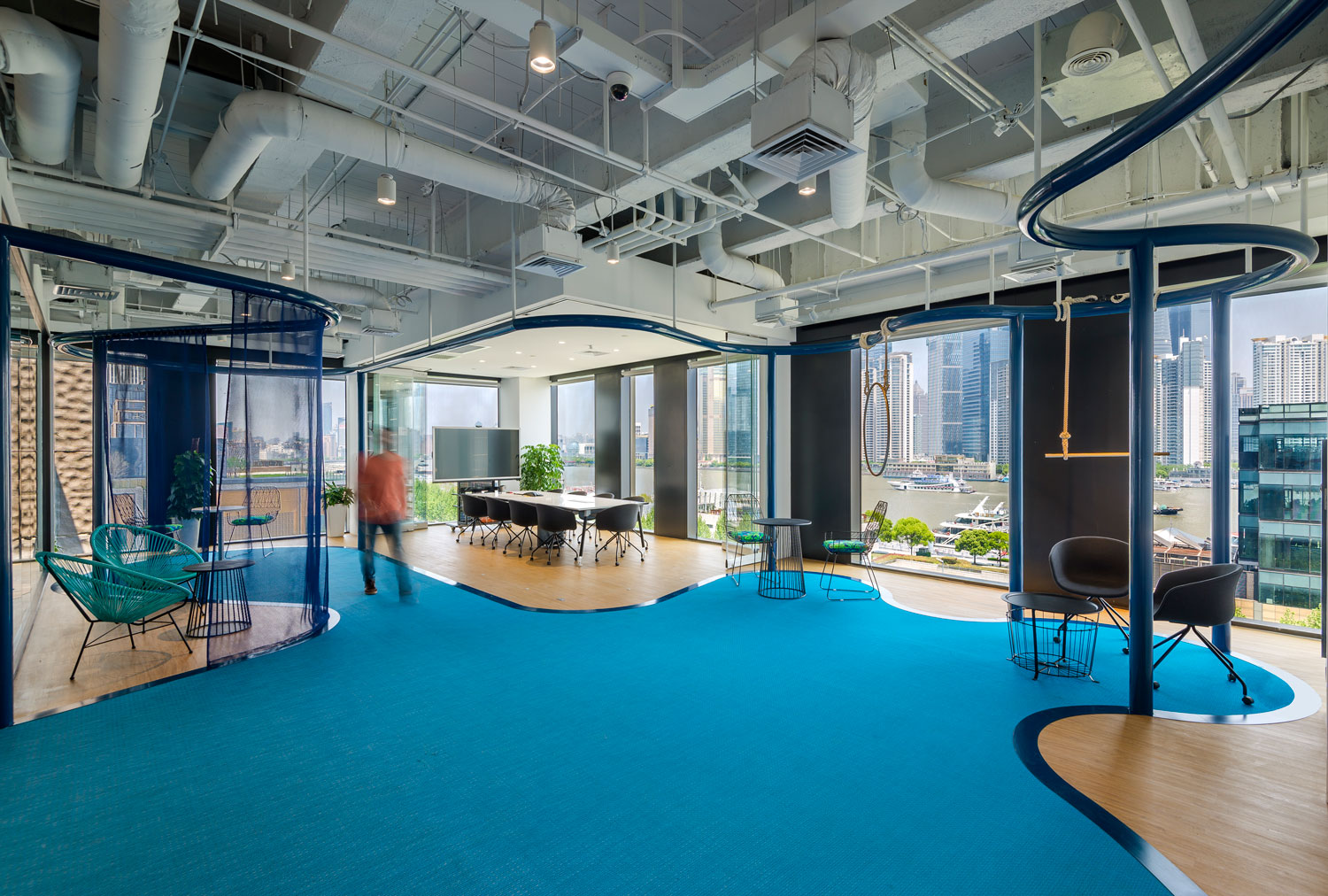
© 100architects
Underwater Office Space
The Bund | BFC Tower | Shanghai, China
100architects was commissioned by Club Med to design their new office space in Shanghai. The French company was moving its Asia-Pacific Headquarter to the recently finished Bund Financial Center, at The Bund, designed by Foster + Partners & Heatherwick Studio.
Club Med is specialized in the market of all-inclusive holidays, with many vacation villages and resorts in the most exotic and breathtaking destinations around the World.
From the very first meetings with them, they state very clearly that Club Med is an unconventional company, and their new office should reflect extravagancy, presenting themselves as a young & fresh company. Therefore, when brainstorming about the concept idea, the first thought in which we all agreed was to design an office that inspires vacations, holidays, and reflects the happiness that one feels when arriving to a new sunny destination at the sea.
Although the scope of work included the design of the entire office, Club Med specifically requested to have special accent in 2 main areas: the signature Lobby, which would be the space in charge of offering a very good first impression to clients and visitors alike; and the Pantry, which should be understood as a social space for employees, rather than just a pantry to have coffee or breakfast. Informal gatherings and team building activities were intended to take place in the social Pantry.
Based on a Mediterranean feelings of holidays, which is swimming, the Lobby was conceptualized to mimic a swimming pool, in which visitors would be submerged under water.
To create this illusion, a deep blue elevated pipe was designed to be hanging overheads, looping around the lobby defining different mini-areas within the lobby area. The shape of the pipe is at the same time projected onto the floor, in order to enhance the virtual subdivision of the space, having 2 different materials on both sides of the projected pipe: blue PVC carpet as the pool water, and PVC Wood flooring as the deck around the pool.
The result is a multifunctional (but virtually subdivided) space in which each loop offers a mini-function, such as a reception desk, meeting room, waiting area, informal meeting spaces, hanging phone booths, etc…
The Pantry was designed to be as functional as possible having into account the diversity of activities that it would host. As main features, a long yellow kitchen was designed to solve all the practical needs of cooking, storing, coffee making, etc, in the same space, while a wooden mini-amphitheater was located at the end of the space in order to provide enough seating areas for hosting communal activities or public speeches.
The working areas where solved with an open office typology, in order to foster relationships among employees and directors. Functionally efficient, working spaces count not only with long communal working tables, but also with private offices with glass partitions, enhancing transparency and bringing natural light to all corners. Hanging greenery has been also included as a good mood generator.
Special mention for the 2 pieces of signature furniture designed for the open office in order to provide platforms for interactions among employees. Their morphology defines other mini-functions such as team briefings, small workshops, informal meetings, etc…
This project was in collaboration with the product designer Diego Fuertes.
Project Credits
Project name: The Underwater offices, ClubMed Shanghai Headquarters.
Designer: 100architects + product designer Diego Fuertes
Design team: Javier Gonzalez, Marcial Jesus, Diego Fuertes.
Client: ClubMed
Location: BFC tower (Bund Financial Center) Shanghai, China
Built area: 1450m2
Completion: March 2017
Photographer: Amey Kandalgaonkar
About
Designed in collaboration with the product designer Diego Fuertes, the design mimic the inside of a swimming pool
More images
What is an interior intervention?
It is the type of intervention that is carried out in an interior space, related to the alteration of the interior of buildings and their internal spatial configurations, through the insertion or installation of new elements aligned within an existing interior environment.
This typology requires a careful adaptation to the context, the form and the structure of the hosting space. It is a surgical or parasitic intervention that renews the attributes of the space, completely changing the way it is perceived and used by its users.
Usually, this tactical intervention is based on the colonization of the existing surfaces of the space, without altering the three-dimensional configuration of the building. By cladding or covering existing surfaces or even inserting foreign objects, placed on top of existing surfaces, we can add aesthetic and programmatic features that can improve the functionality of the interior space.
Projects
insta100
Publications